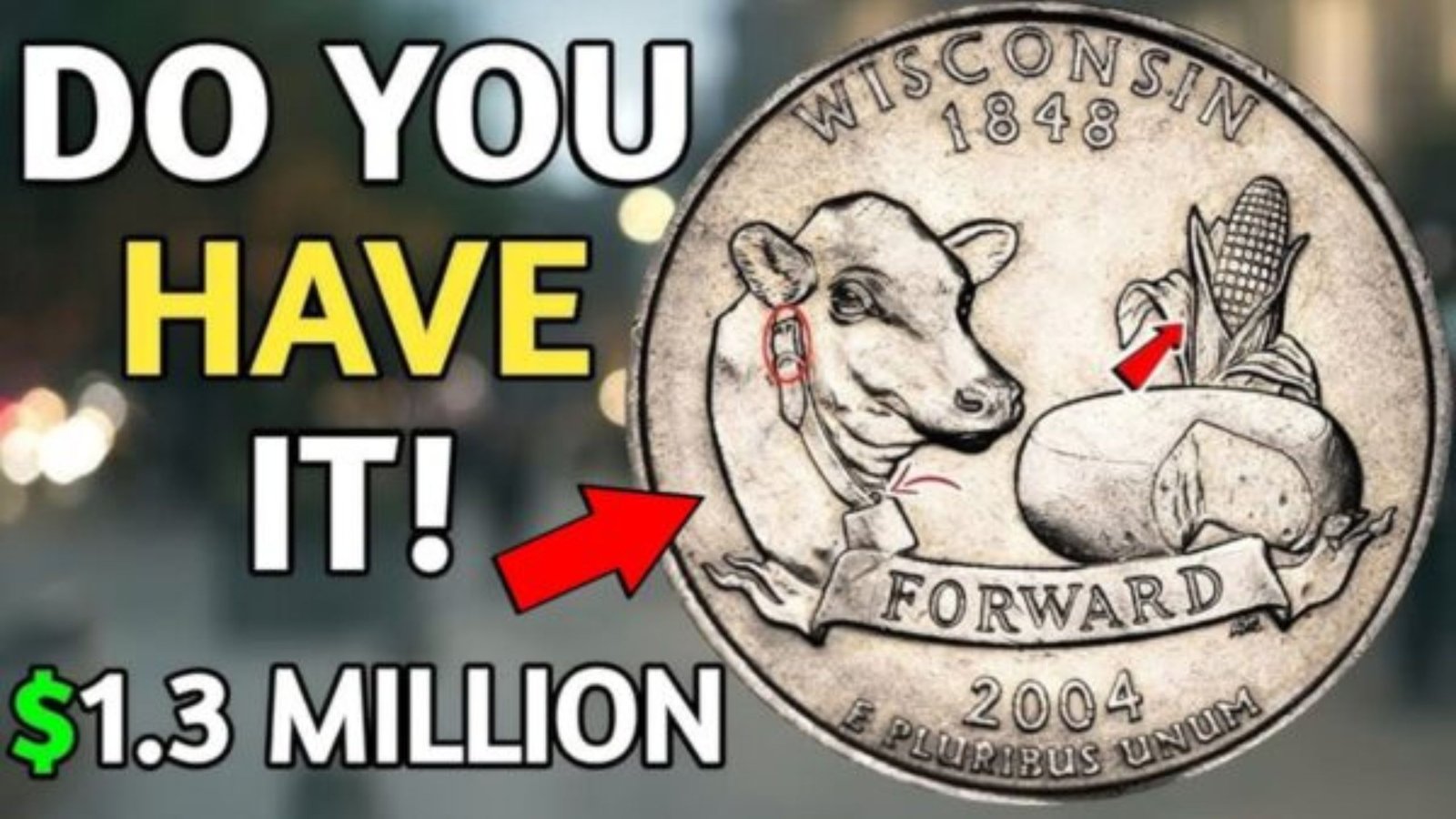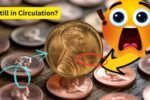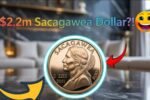The Most Wanted Coins in America : In a surprising twist that has both casual collectors and seasoned numismatists buzzing, a seemingly ordinary U.S. quarter has rocketed in status to become one of the most sought-after coins in the country. What was once just pocket change is now a prized treasure — and it might be hiding in plain sight.
The Coin in Question
At the center of this newfound frenzy is a specific variant of the 2004 Wisconsin State Quarter — part of the U.S. Mint’s 50 State Quarters Program. While millions of these quarters were produced and circulated, a tiny detail has transformed a select few into a collector’s dream: an extra leaf.
Known as the “Extra Leaf Low” and “Extra Leaf High” varieties, these rare errors show an additional corn husk leaf on the left side of the ear of corn on the reverse side of the coin — something not present in the standard design. The mistake was likely due to a die gouge during the minting process at the Denver Mint, but instead of being discarded, some of these error coins made it into circulation.
How Rare Is It?
Estimates suggest that only a few thousand of these error quarters exist. Though that’s not an extremely small number in numismatic terms, demand has driven values sky-high. Depending on condition and the exact variant, these coins have sold for hundreds — and in some cases, thousands — of dollars, with uncirculated specimens fetching even more at auction.
What makes this coin so fascinating is that it wasn’t minted in the distant past or as part of a limited release — it’s a relatively recent piece of U.S. currency that was freely circulated. That means it’s entirely possible someone could find one in their change jar, coin roll, or soda machine return slot.
What to Look For
Here’s how to tell if you’re holding one of the valuable Wisconsin quarters:
-
Date: 2004
-
Mint Mark: Look for a “D” below the “In God We Trust” inscription, indicating the Denver Mint.
-
Reverse Design: Focus on the ear of corn. The rare versions show an extra leaf:
-
Extra Leaf Low: A small leaf extends downward near the bottom of the corn stalk.
-
Extra Leaf High: A curved leaf points upward near the middle of the ear.
-
If your quarter shows either of these extra leaves, it’s time to consider getting it appraised by a professional grading service like PCGS or NGC.
Why the Sudden Surge in Popularity?
While these error quarters have been known to collectors since their discovery in the mid-2000s, recent viral posts and collector community chatter have reignited interest. The idea that a “common” coin could be worth so much money — and still be in circulation — appeals to the treasure hunter in all of us.
Adding fuel to the fire, a few recent sales have made headlines: one high-grade Extra Leaf Low quarter reportedly sold for over $6,000, and others continue to perform well in online auctions and coin shows.
Keep Checking Your Change
With the resurgence of interest in rare coins — spurred in part by economic uncertainty and growing interest in tangible assets — coins like the Wisconsin Extra Leaf quarter remind us that everyday objects can hold extraordinary value.
So, the next time you’re handed a quarter in change, don’t just toss it in your wallet. Take a second look. You might be holding one of America’s most wanted coins — a small, shiny ticket to an unexpected payday.
Tip: Keep a magnifying glass handy, especially if you enjoy coin roll hunting. These treasures are out there — and they’re not just in museums or safes. They might be right in your hands.
FAQs: This ‘Common’ Quarter Just Became One of The Most Wanted Coins in America
Q1: What makes the 2004 Wisconsin quarter so valuable?
A: A small number of 2004 Wisconsin quarters minted in Denver (marked with a “D”) feature a die error — an extra leaf on the ear of corn on the back of the coin. There are two known variations: “Extra Leaf Low” and “Extra Leaf High.” These minting errors make the coins rare and highly desirable among collectors.
Q2: How much is the Extra Leaf quarter worth?
A: The value varies depending on condition and whether it’s the Low or High Leaf version. Circulated coins can sell for $200–$500, while high-grade, uncirculated versions have sold for $1,000 to over $6,000 at auction.
Q3: How can I tell if I have a valuable version of the coin?
A: Look for these key features:
-
Date: 2004
-
Mint Mark: A small “D” below “In God We Trust” (Denver Mint)
-
Extra Leaf: On the left side of the corn, look for an additional leaf:
-
Low Leaf points downward.
-
High Leaf curves upward.
-
Q4: Can I still find this quarter in circulation?
A: Yes, although rare, some may still be in circulation. People occasionally discover them in pocket change, coin rolls, and even in collections where their value went unnoticed.
Q5: What should I do if I think I’ve found one?
A: First, examine the coin under a magnifying glass and compare it to online reference images. If it appears to be a match, consider sending it to a professional coin grading service like PCGS (Professional Coin Grading Service) or NGC (Numismatic Guaranty Company) for authentication and valuation.




